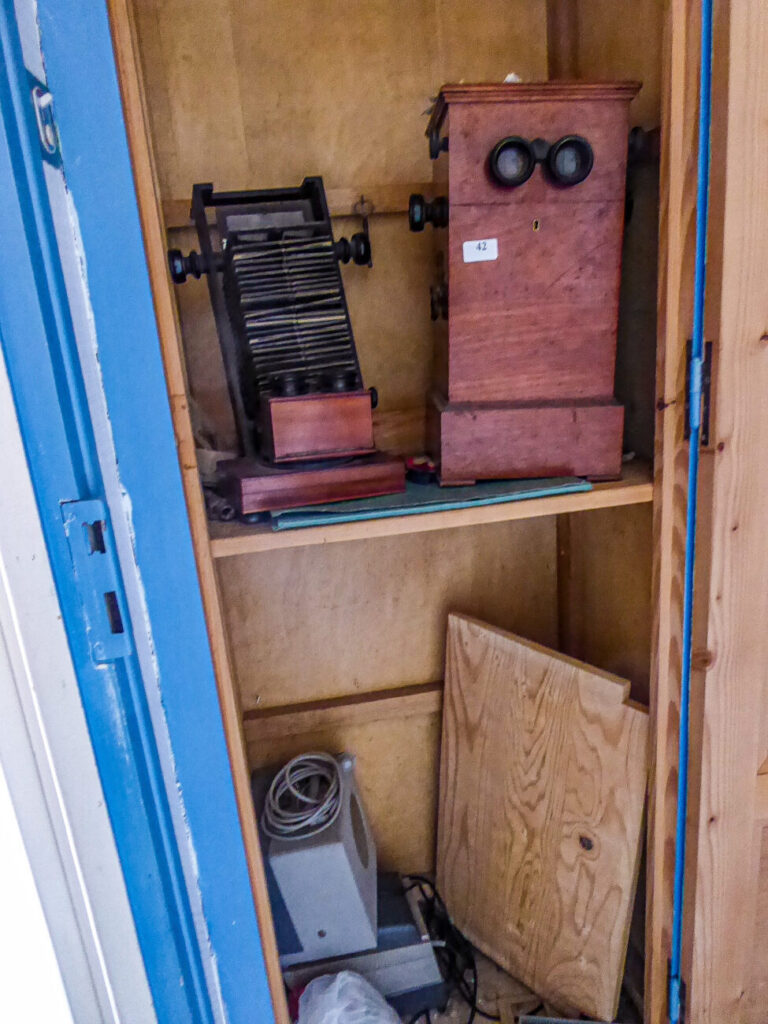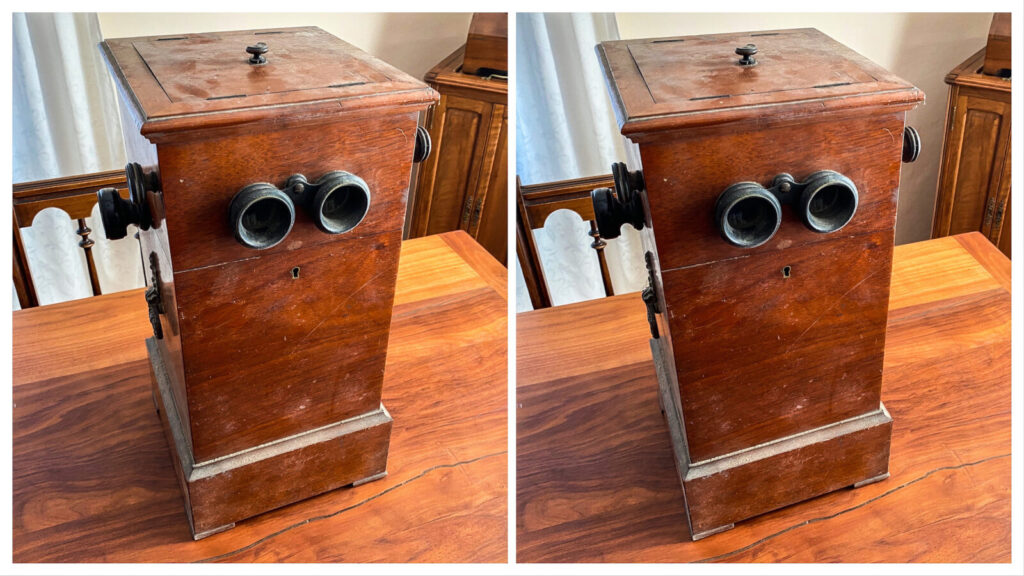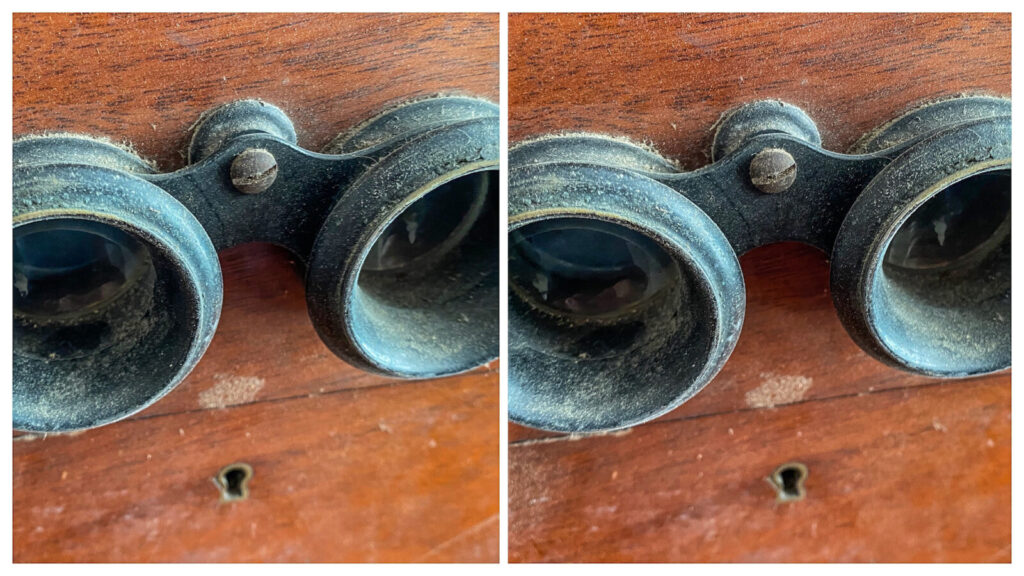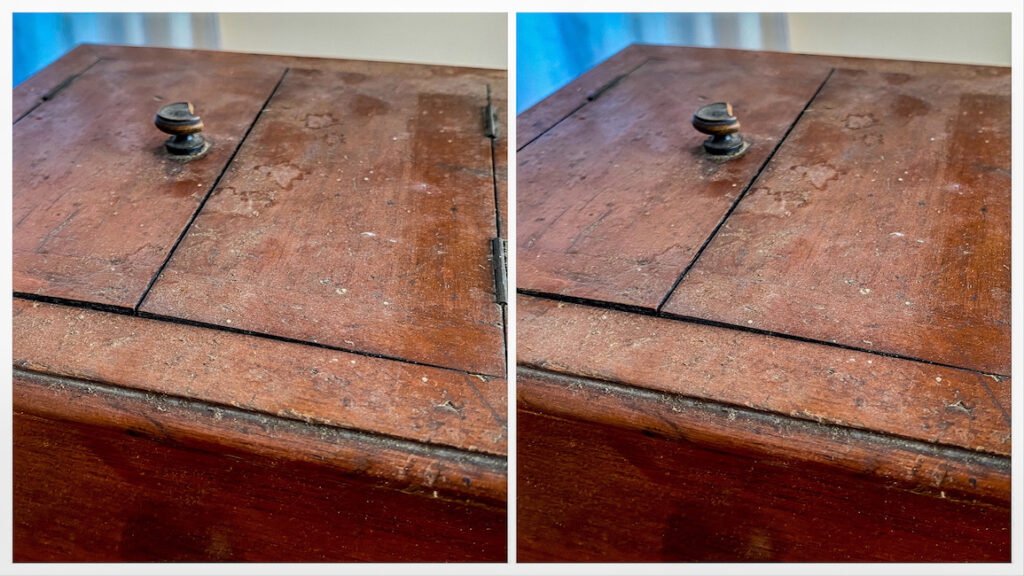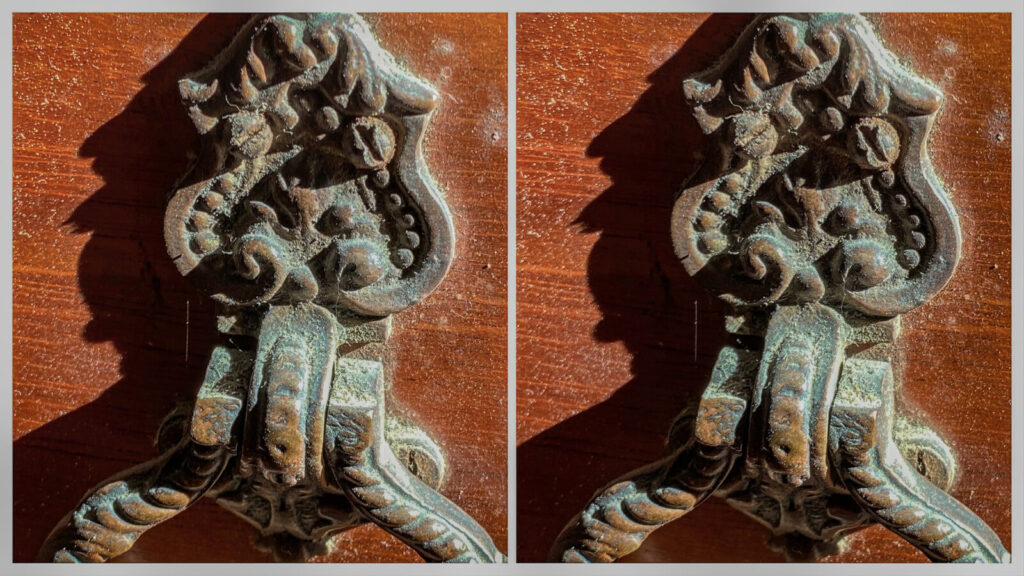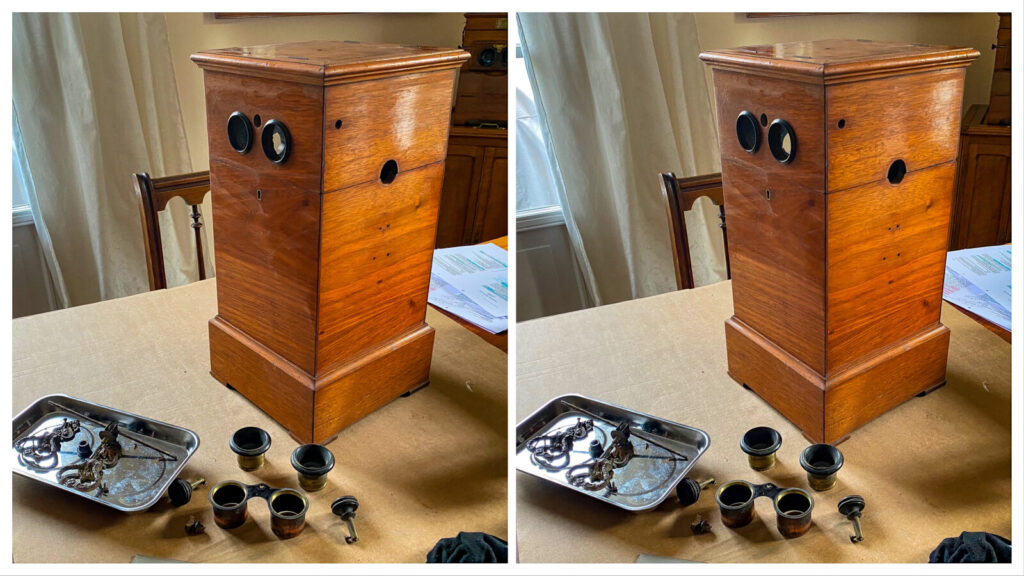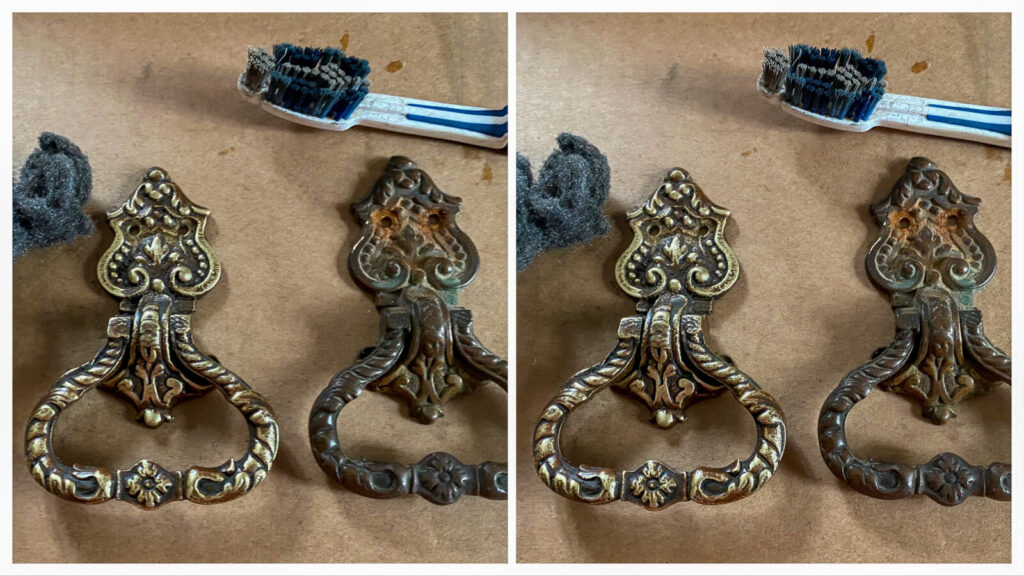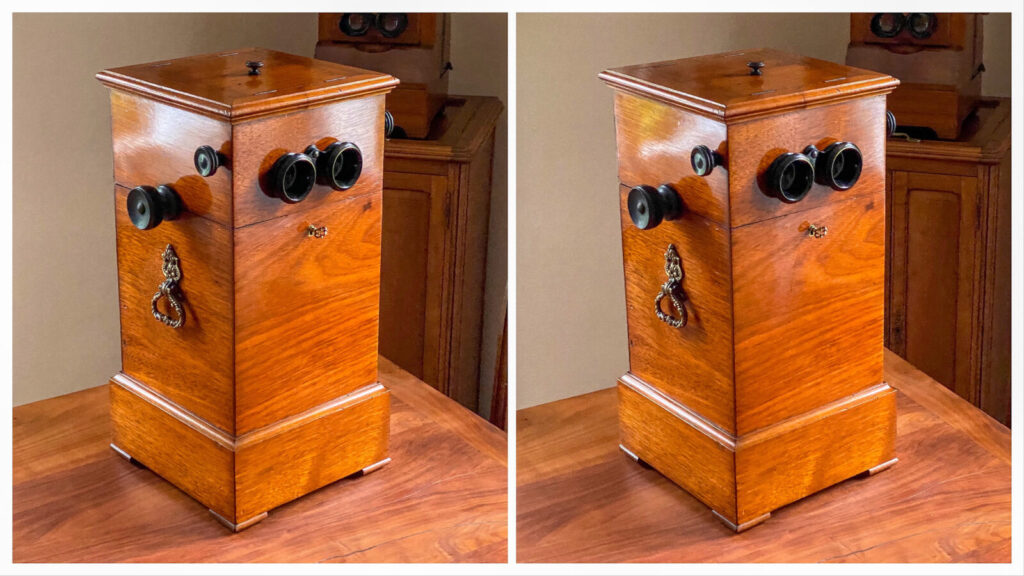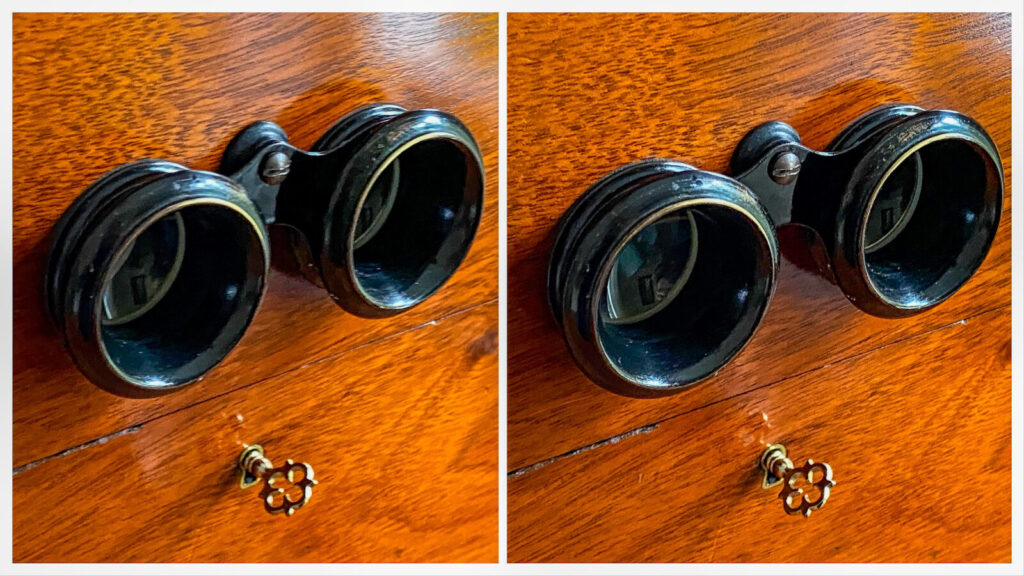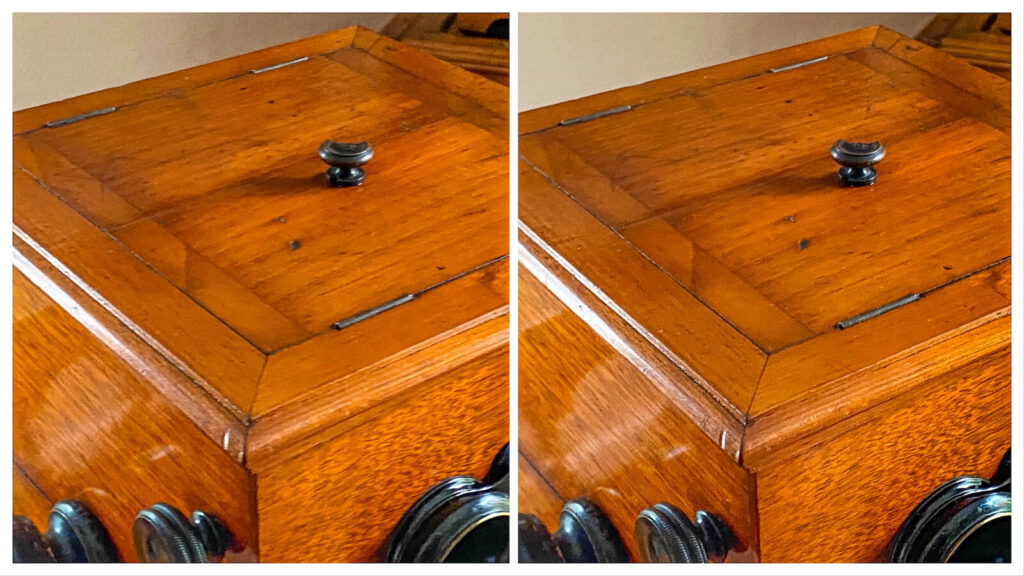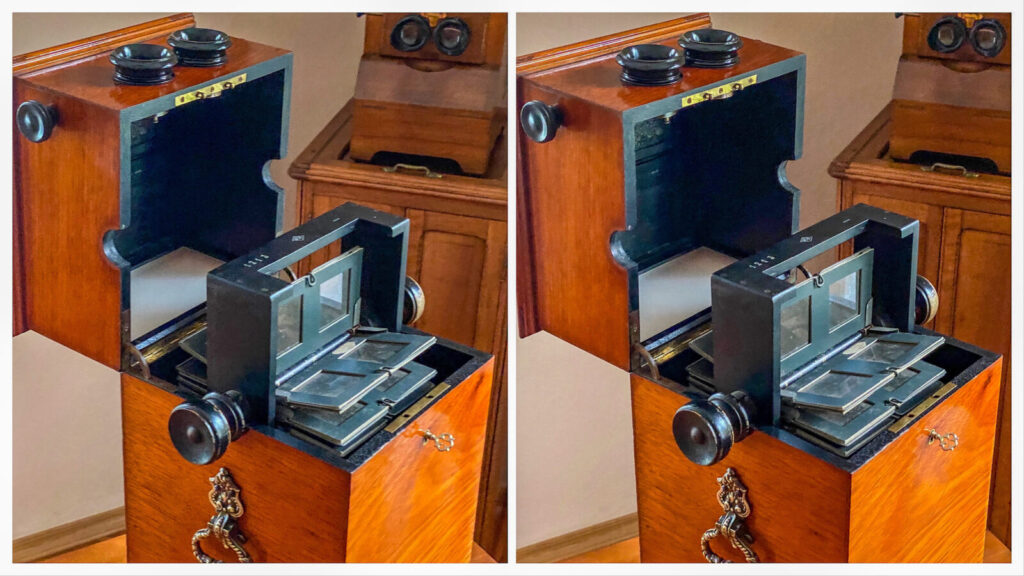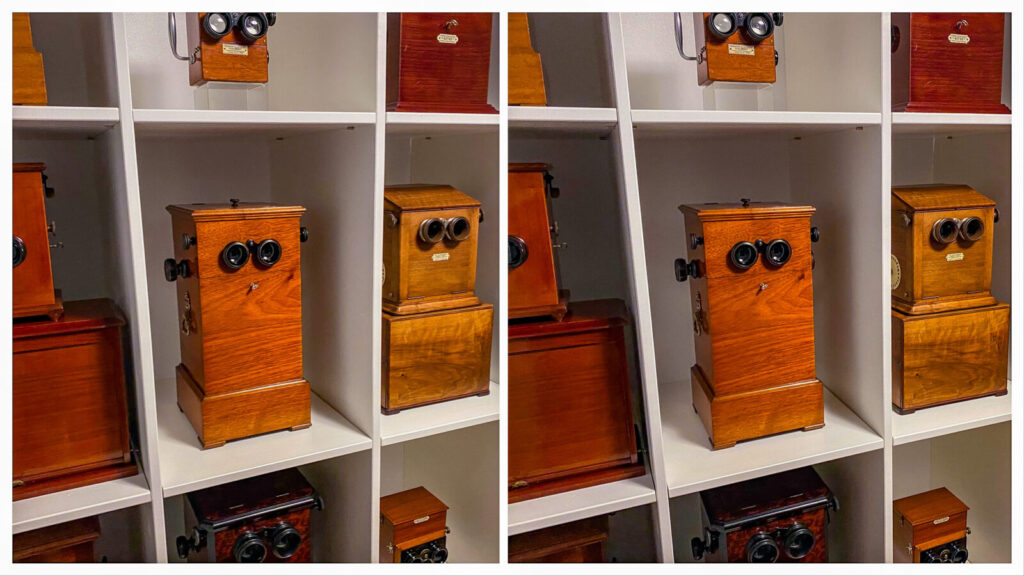A Restorer’s Journey
written for the stereosite by Pascal Martiné, Germany
One essential part of becoming a serious collector is frequent research from different online sources such as eBay, platforms of traditional auctioneers, etc. For further information, I recommend the article Collecting Stereoscopes by André Ruiter. Most often, you only find particular items or previous collections, but you never know where a specific viewer originally came from.
Thus said, there are some fortunate exceptions. One is the so called vide de grenier in France which means ‘emptying of the attic’. This can simply happen like a traditional flea market with items from one single household. Such sales are typically done by heirs after a bereavement. But the heirs could also hire a professional and the vide de grenier becomes a professional auction held on site — and nowadays sometimes streamed online.
That way, you will get a glimpse of the individual history of your treasure and know where it was stored, wether it was looked after or long forgotten, if the owner was well situated or not, etc. For me, these stories are invaluable and add a more personal aspect to a collectible. This counts even more because those stereoscopes will usually contain photos that tell even more about their past.
As a passionate restorer, I especially appreciate viewers that have remained untouched since their last use. I carefully remove the dust of decades to reveal the original beauty of a stereoscope. Being the first one to do so feels almost like getting in touch with those who bought it a century ago. I want to take you to one of those journeys.
A vide de grenier took place on September 30, 2021 in Abbeville in the north-west of France near the coast. As usually, you could take a look at the location online a few weeks in advance. Between furniture, knickknacks and rubbish — all tagged on with a little number — I spotted a tabletop stereoscope carelessly placed in a closet:
The large black knob on the site of the device identifies it as a revolving stereoscope (for additional information on this type see the article A Multiview Stereoscope Comparison). Furthermore, the little keyhole and the and the indistinct horizontal line above tell that you can flip back the top to replace the whole chain. Indeed, on the left of the viewer you can see a second chain including stereo photos. I easily recalled the model. This type of viewer was only manufactured by Mattey both for the 8.5x17 and the 6x13 format. If you used card board frames it was also suitable for the 45x107 format introduced by Jules Richard in 1893 (for background information see the article Le Taxiphote). Once again, André Ruiter has written an interesting article about exactly this type, the Mattey Revolving Stereoscope. While he has one of the rare deluxe models, this one is the more common mahogany standard version. Nonetheless, the exchangeable chain makes it one of the more advanced viewers of that time.
So, I subscribed to the auction and logged in live at September 30. As you may have already guessed, I won it for a good price, and after the normal process I received the stereoscope a few weeks later.
According to my request, they had removed the chain to prevent unwanted movement during the transport. So I was not able to tell which series of stereo photos was inside the viewer most recently. One consisted of family and travel photos, one of a mix of professional and amateur slides depicting the first World War. What I could tell was that the latter was used a lot more frequently — the black paint on the right turning knob was almost completely worn down. Also, this one is the original chain that came with the viewer. Both bear the serial number 1213. The additional chain has the number 1220. So I can assume that it was bought at the same time or only slightly later.
Mattey produced this viewer model for quite a long time without any remarkable changes. So how can I tell if my viewer is an early model from shortly before 1900 or a late model from around 1920? As far as I know there is no reference to the serial numbers and a low four digit number is neither definitely earlier nor later.
Luckily, restoration always requires a really close look. The smaller turning knobs that let you adjust the oculars are made of wood and have a narrow notch. Actually, that notch is the reason why I am familiar with this kind of knob: it’s terribly annoying to clean it perfectly. It seems that most manufacturers, despite all competition, used the same focusing knobs. That’s why I’ve come across this type many times. But only on early viewers! They all seem to have changed to bakelite knobs at some point. More precisely, Richard already started to use bakelite knobs with the introduction of the Stéréo-Classeur in 1900, while the chain-operated predecessor still used these wooden knobs.
Another piece of evidence is that my similar 8.5x17 Mattey viewer has also wooden knobs and bears the serial number 891 which is only a little earlier than 1213. On the other hand, two later Mattey models have also changed to bakelite knobs but it seems that Mattey discontinued using serial numbers so this reference is unavailable. Nevertheless, it seems reasonable for me to conclude that I got an early model from around 1900.
After this little digression about dating the viewer, let’s return and take a closer look. Did I say that I enjoy removing dust from an untouched viewer? I have to clarify that I was talking about gently blowing or wiping it of. This time it would be hard work.
This viewer was extraordinary dirty and made me doubt if I could reach a satisfying result. There was some sort of grey powder everywhere, even on the inside and on every single stereo photo. So I did a cleaning of the outside with a damp sponge before I tried to disassemble as much parts as possible.
I then applied a water based liquid including abrasives that sanded off the remaining dirt and smoothed the shellac. For a more detailed description see my article about Restoring Stereoscopic Antiques. I had already seen that there was a flaw in the top trim, but with the dirt gone I discovered even more scratches especially on the top, but also here and there on the base. Fortunately, front, back and the sides were not affected at all. Still, before I could do the finishing I would have to do an additional step.
Whether you use shellac, oil or wax, each will change the color of the wood in different ways. For that reason, you may indeed apply different layers one after another, but you have to build up the surface the same way on every part. In this case, a thin layer of linseed oil varnish would bring back the typical shine on polished shellac. But if there’s a scratch down to the wood oil will penetrate through it and this part of the wood would become much darker than the surrounding areas. I like visible scratches as a part of the patina, but they don’t need to be highlighted. To prevent that from happening, I would need to retouch the scratches with shellac first. I only dabbed a little bit of shellac into the scratches with a cotton swab and repeated the treatment with the polishing liquid. I finished the wood working with a layer of shellac on the trims because these parts are generally worn and I wanted to bring back an overall shiny effect.
Even though I think that the handles were originally burnished and not brass colored I had to grind them off with steel wool to remove all signs of corrosion and make them shine again. By leaving out the deeper lying areas I still achieved a nice antique effect.
I also used my polishing liquid for the black painted metal oculars and steel wool for screw heads, etc. Finally, I put on a thin layer of linseed oil varnish on all wooden or painted parts and penetrating oil on metal parts to protect them from further corrosion. I also cleaned the inside and the chain with a soft brush and applied only a little linseed oil varnish to increase the saturation of the black paint. A little oil on all moving parts and that’s it.
I think it was good that the stereoscope was hidden in a closet and the sun could not bleach the wood. Though, if you have a stereoscope that looks pale on the side that stood towards a window for years, this is not always problem. For example, if you have a waxed surface you can simply wash it off. After you applied oil to the wood the color will mostly come back. But this is always a problem with shellac. Oil can not penetrate the wood through it and you don’t want to remove the original shellac because you will always be able to distinguish between old and new shellac. But that’s another story.
So, overall I’m really happy how it turned out and I hope you enjoyed this time travel back to the original look of this stereoscope as much as I did during the process. Yes, this is really the same viewer.
After this resurrection, it was, of course, not difficult to find a nice place on my shelf, where it is surrounded by comrades made by Richard, Bize, Zeiss and others.
Pascal Martiné (Mainz, Germany)
Passionate about stereoscopy as a collector and photographer since 2016. Admin of the stereosite. More on About me.

